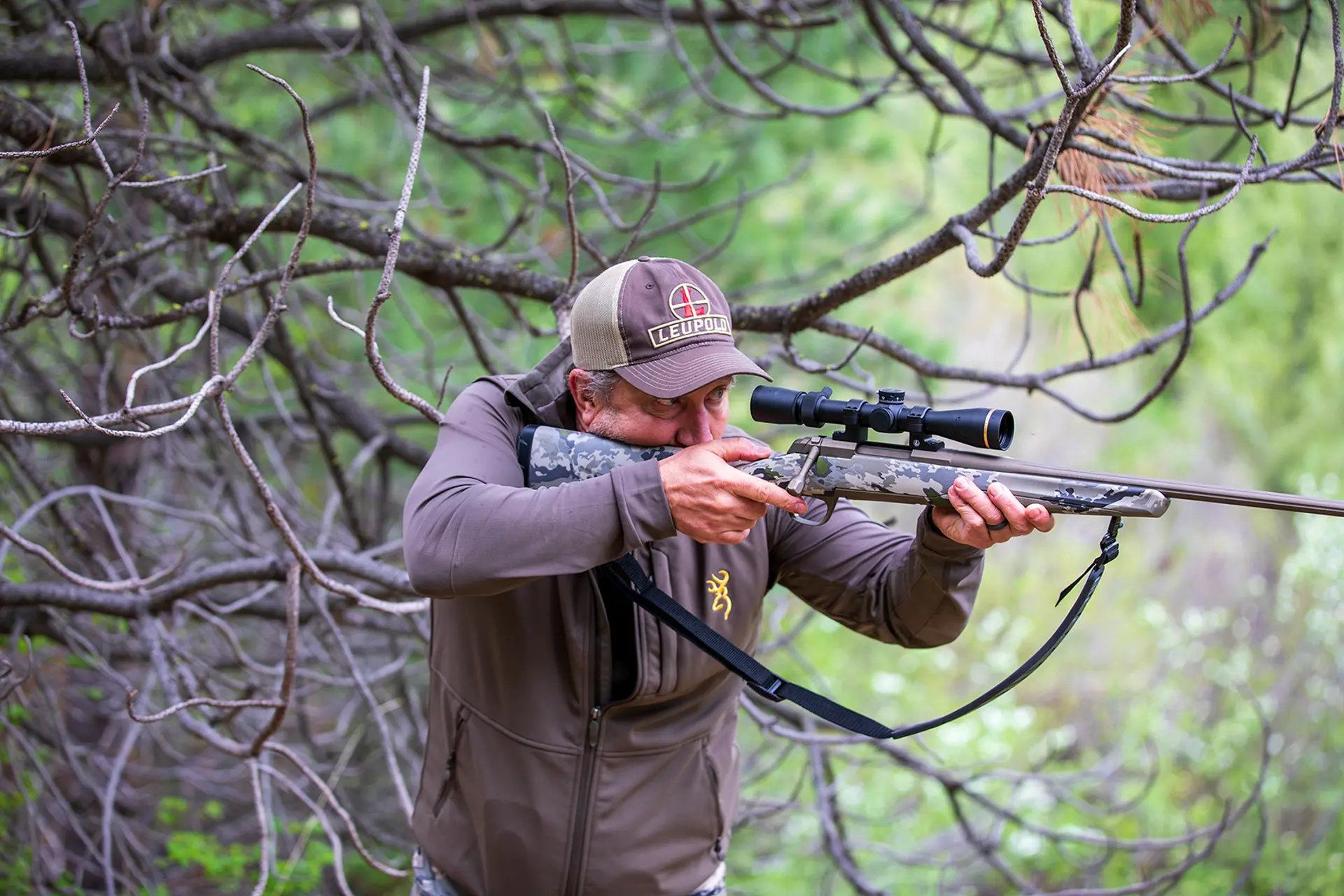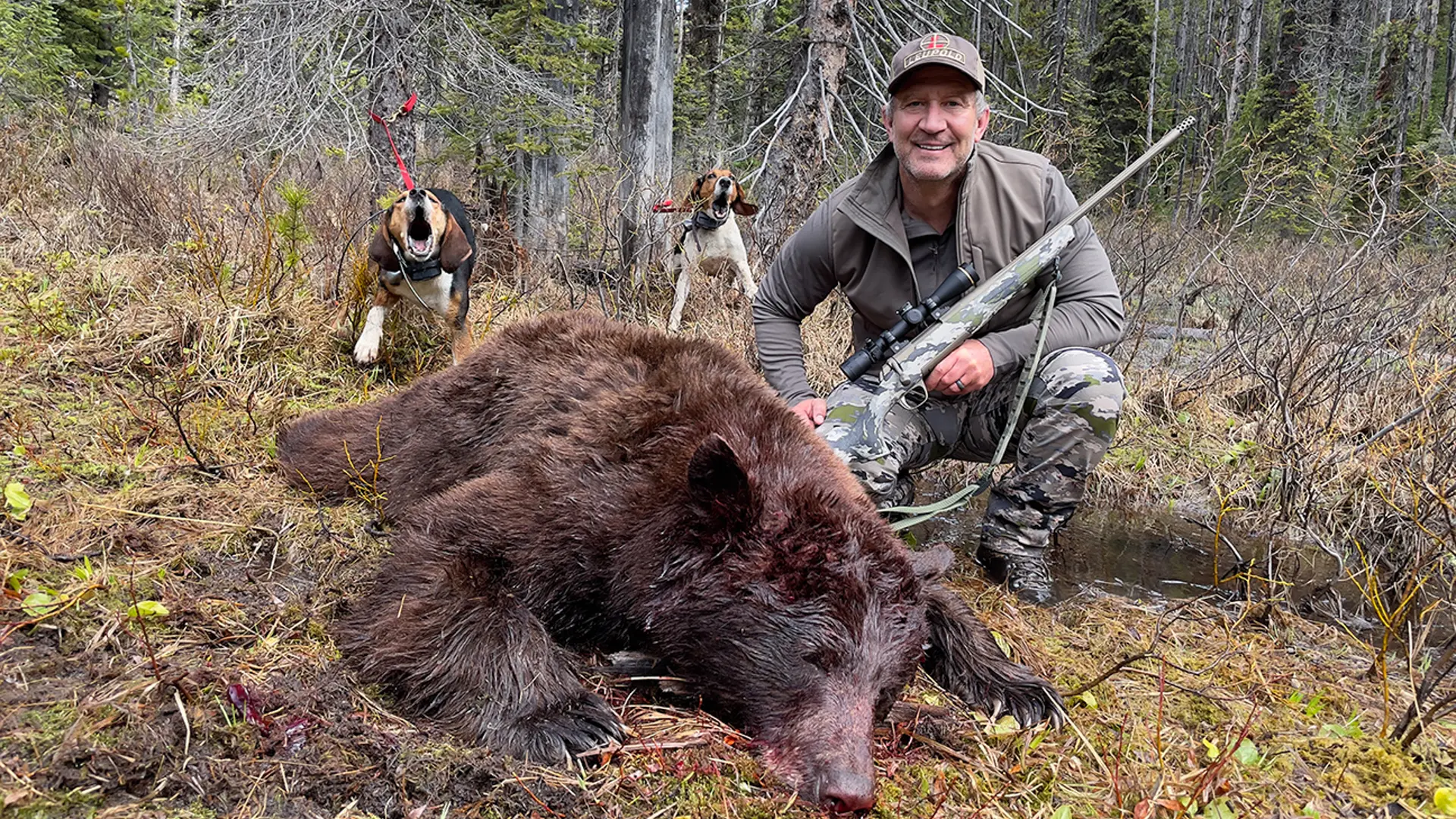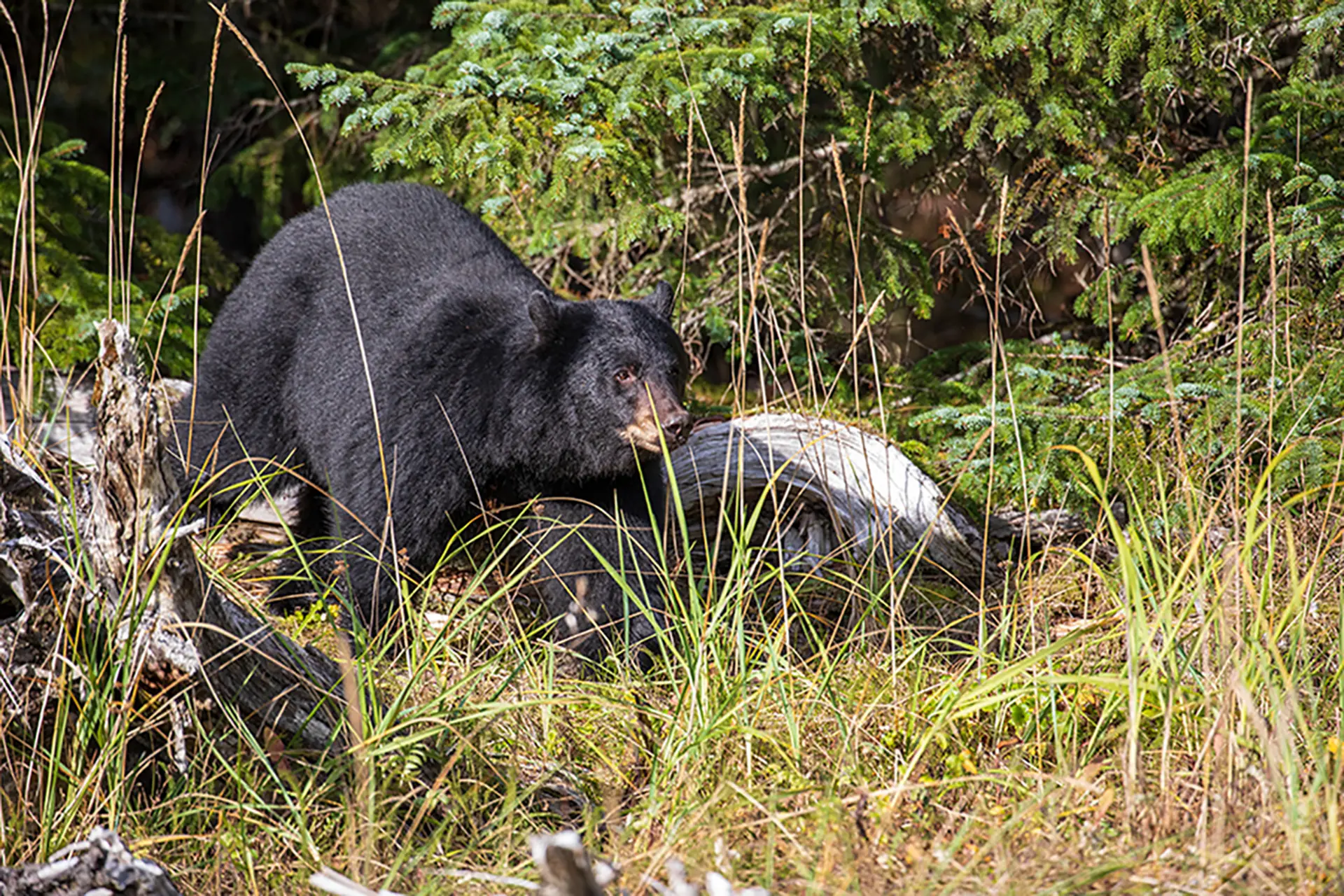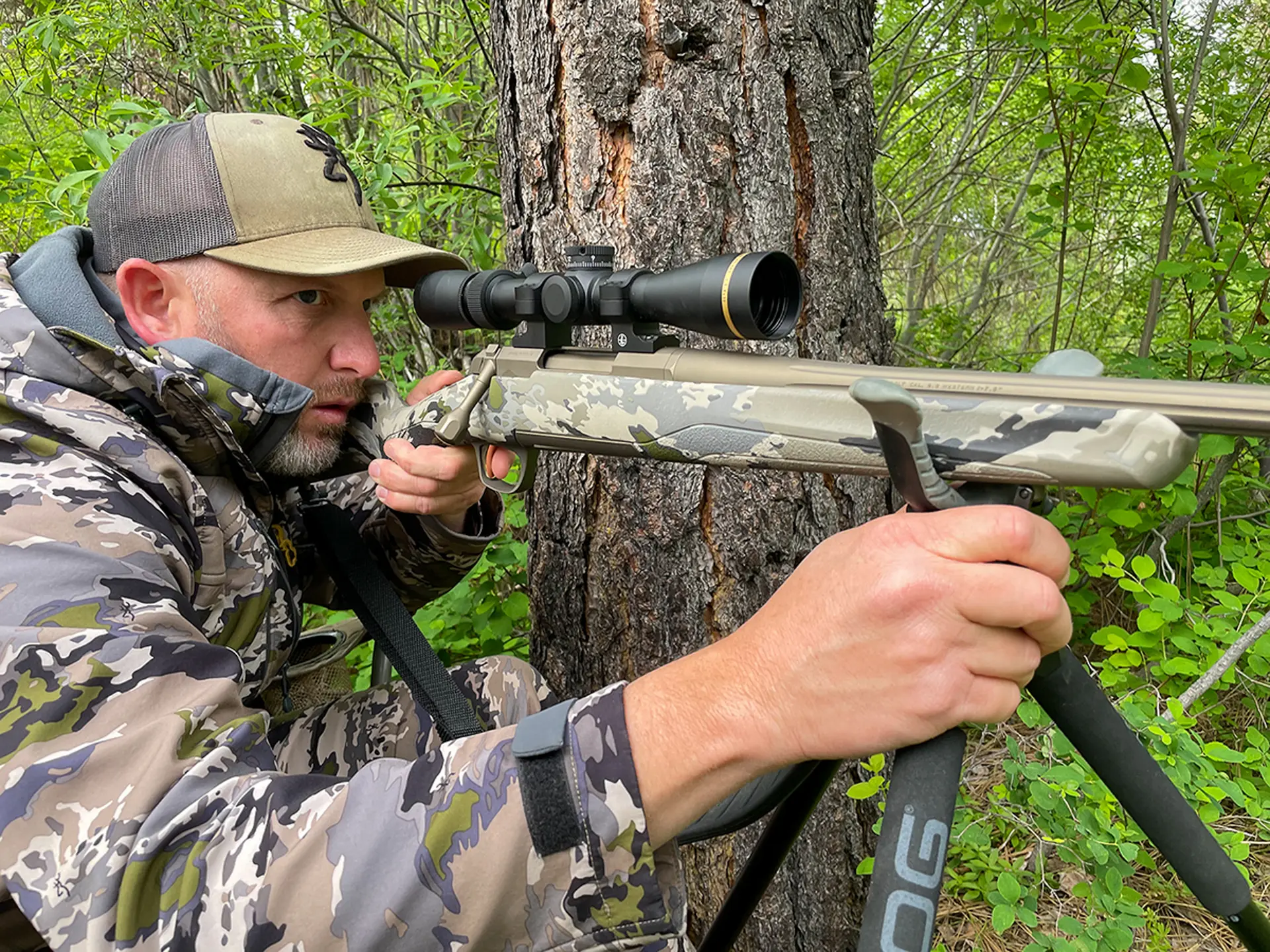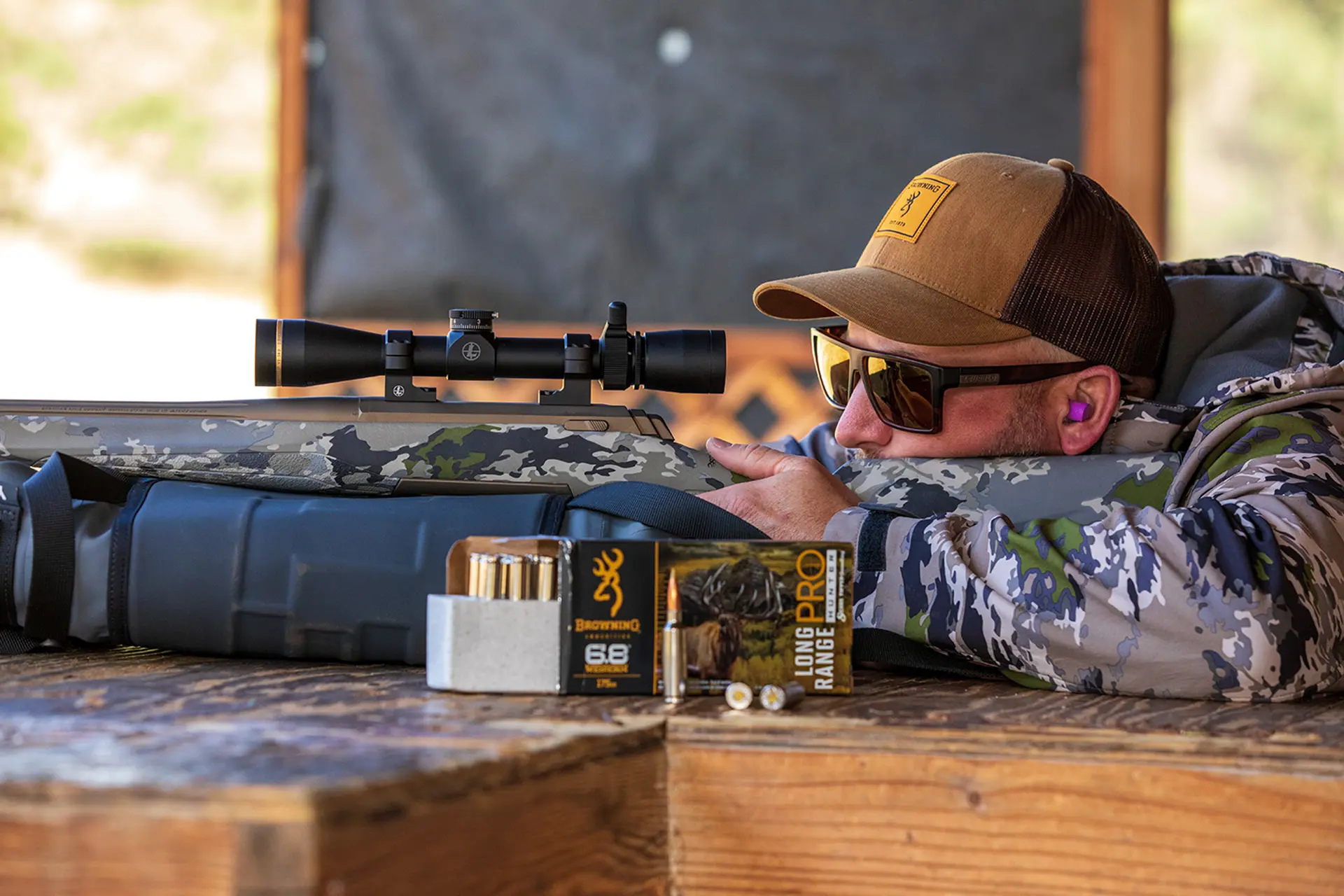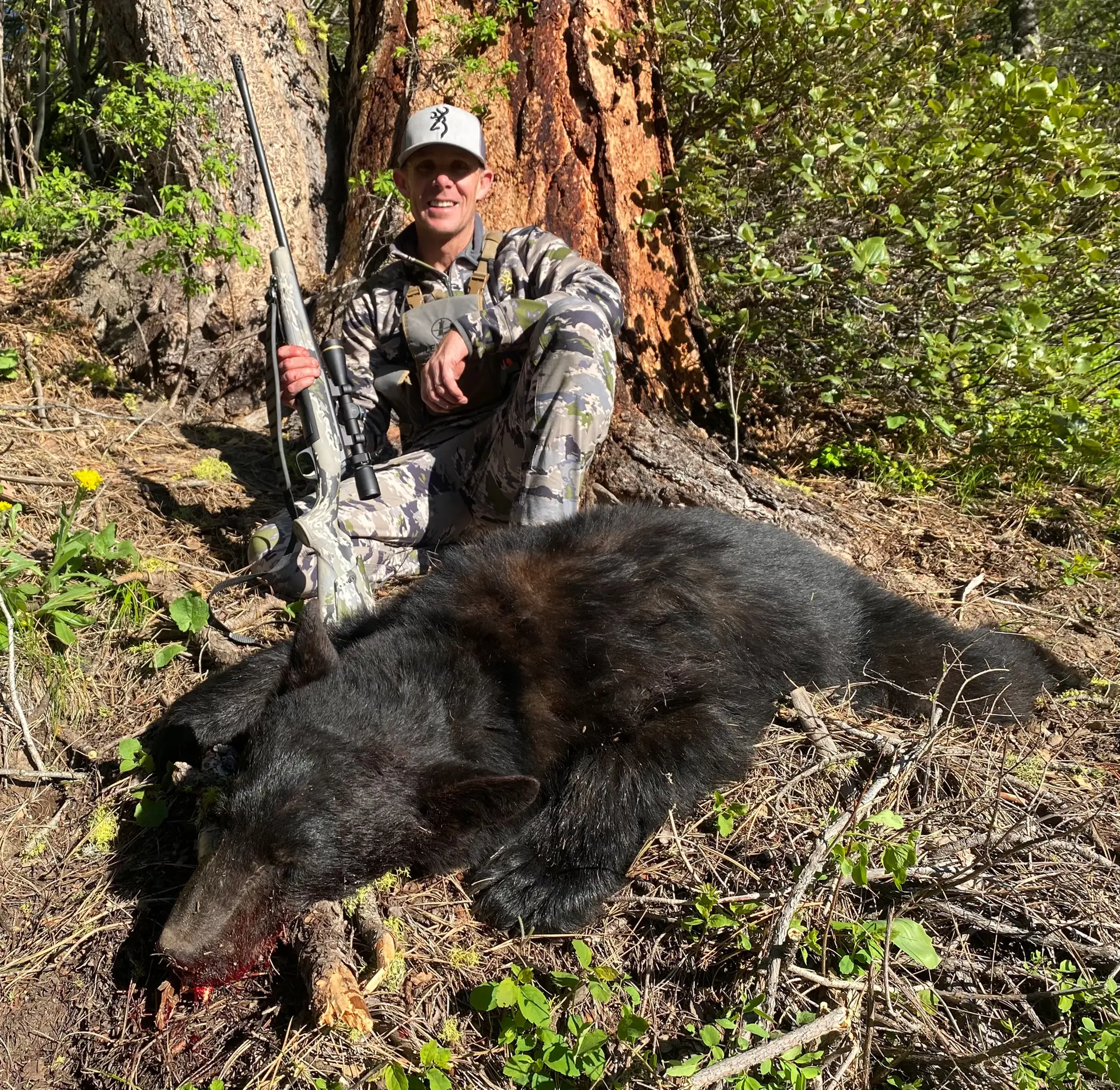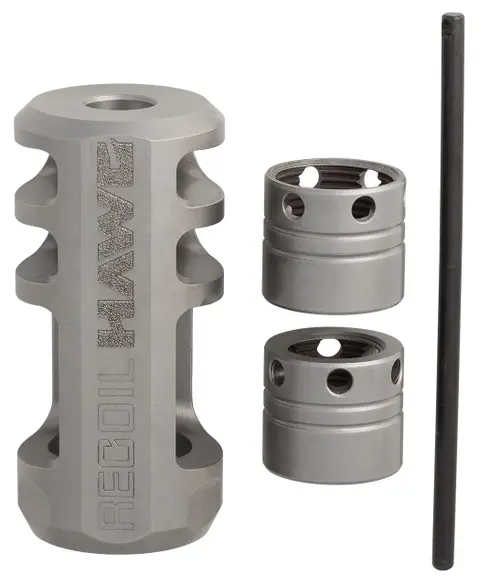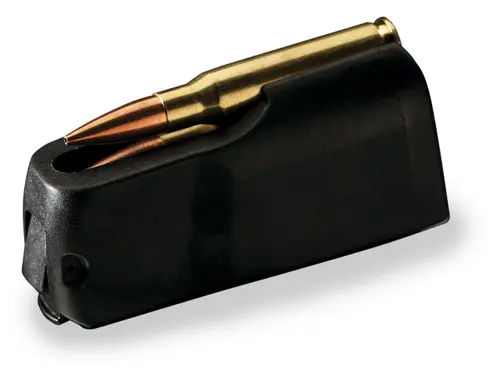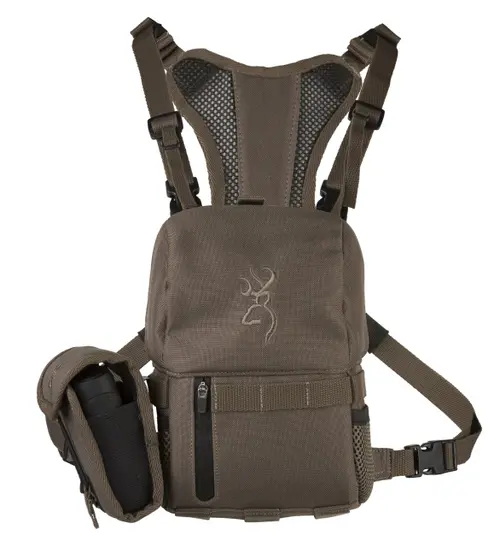Bear Hunting Options
Bear Hunting Options
By Scott Haugen Published on May 15th 2024
The trek up the mountain wasn’t easy, but a sense of urgency kept us moving. “This bear will never tree; we have to hurry and head it off before it dives into the next canyon,” encouraged the houndsman I struggled to keep up with.
Trudging through packed snow at 7,400 feet amid the granite peaks, this wasn’t my first rodeo. One of the most grueling hunts of my life was for a bear that wouldn’t tree. A pack of over a dozen hounds chased it into a wilderness area, where we caught up to it minutes before dark.
That chase started at 5:00 a.m. We returned to the truck just after 2:00 a.m. the following morning with one of the biggest black bears I’d ever taken. The chase I now faced stirred nightmares of the prior experience over 30 years ago.
“Hurry, we’re going to get a window right through there,” the fit houndsman pointed. I stared down his arm, past his index finger, through stunted pine trees and over some dry grass. That’s where I saw two hounds bouncing about. They’d bark whenever they could catch their breath. They weren’t moving fast. Then the bear slowly sauntered into view, not bothered by the two hounds nipping at it.
“When you have a window, go ahead and…” Boom! I interrupted the man with a single shot. That was my window — a two-foot radius the bear moved through when the dogs weren’t in line with it. The 75-yard shot came off-hand. It was a reaction, not a planned-out, in-depth thought process before pulling the trigger. The Browning X-Bolt chambered in 6.8 Western did the job, dropping the bear on the spot with a bullet between the eyes. Any good bullet would have instantly killed the bear. What impressed me the most was the rifle’s quick handling and pinpoint accuracy, and I’ve seen it efficiently take a number of black bears since. On this hunt, precise shooting was necessary to do the job properly and not risk injury to the dogs.
No other form of bear hunting can push you as hard and fast as trying to keep up with a hound pack chasing a giant boar that won’t run up a tree. If you’re considering a bear hunt with hounds, know that the hounds have no control over when, where, or if a bear will tree. When you tree a bear, if the bear isn’t mature enough, a small sow, or simply one you don’t want to shoot, you just grab the dogs and walk away. Odds are that you’ll tree multiple bears before you find one you want to drop the hammer on. Sometimes, the bear will hop up a tree next to a road before all the hounds are released. Other times, they’ll run and climb all day and all night, and you’ll never catch them. There are no guarantees in any form of hunting, even with hounds.
In states that allow hunting with hounds and harvesting bears over bait, the element of selective take is appealing. You don’t have to shoot if you don’t want to. If you want to learn about bear behavior, go on a hunt for them over bait, and don’t be in a rush to punch a tag. What you learn about a bear through hours of watching it — versus pulling the trigger the moment it appears — will be an education worthy of your time.
Parts of North America with high black bear densities can find you staring at a half-dozen or more bears on a single bait. Some come and go. Others come and stay. Sometimes, they’re all there at once. Watching the interaction between bears and learning their behaviors will help you become a well-versed bear hunter.
On the same Idaho hunt where I chased a bear with hounds, fellow outdoor writer and friend Jace Bauserman sat over a bait site with his Browning X-Bolt also in 6.8 Western. His encounter on the first evening of his bear hunt was heart-pounding. Bauserman was shown trail cam images of two chocolate bears and a cinnamon-colored bear.
What makes bear hunting over bait amazing is that you never know what may happen. An hour into the hunt, a sizeable coal-black boar appeared on the bait site. Bears are difficult to judge, and Bauserman remained patient. He watched the bear on the bait for 15 minutes before deciding to squeeze the Feather Trigger of his rifle. Bauserman was sitting on the ground 40 yards from the bait site, tucked into a stand of small pines. This added an element of excitement to the hunt. Bears don’t see extremely well, but better than people give them credit for, and when you’re on the ground and up close with an apex predator, you better be on your A Game!
Spot-and-stalk is the most common approach taken by bear hunters. In the spring, green grass, bulbs, tubers, roots, and other fresh vegetation constitute most of a black bear’s diet. In the fall, berries, fruits, nuts, and even insects make up a big part of their diet. They’ll also feast on carrion and will hunt down and kill big game. In parts of their range, black bears kill more calf elk than cougars and have been known to have detrimental predatory impacts on herds.
Black bears have a short digestive tract, so they spend many hours feeding in the spring and fall. Learning a bear’s primary food sources is one of the most important keys for a spot-and-stalk hunter. In spring, bears eat a lot to make up for the weight lost in their winter den, and in fall, they eat a lot to put on weight for winter.
Another way to hunt bears is by calling. Predator calls can work very well to bring a bear within shooting range. If hunting in thick habitat, know that bears often approach fast, closing in for the kill, and you’re the prey. Consider an electronic caller if the image of a 300-pound bear running full speed at you makes you hesitate. E-callers allow you to place a speaker in front of where you’re sitting, and you can control the sounds with a handheld remote. Calling is a thrilling way to hunt bears.
When calling bears, it’s best to locate them first so you can observe their behavior once you start calling. Sometimes, they come on a dead run. Other times, they head in your direction, then get sidetracked and begin feeding or heading in another direction for no apparent reason. Observing a bear’s behavior is essential for knowing what sounds to make and when.
Cold calling, or calling to a bear without first seeing it, requires patience and optimism. Start by finding fresh tracks and droppings. Then, call in the area closest to where the bear went into cover. This is where an electronic caller is preferred because you’ll want to keep the sounds continuously going for an hour or more to keep a bear’s attention. If a bear starts coming in and hangs up, mouth calls can help seal the deal. Offering different sounds from a different place other than where the e-caller speaker is situated will often entice a bear to keep hunting for the food source. Calf elk and fawn distress sounds are good, as are any predator-calling sounds like rabbits, birds, or goats. Bears aren’t picky; if they’re hungry, they’ll come in.
Bear meat is delicious, but once down, get straight to work. Snap any photos and immediately skin, quarter, and bone out the bear. A bear hide retains a lot of heat, and the meat spoils if not quickly cooled off. Even if taken near a road, skin out the bear, don’t drive home or back to camp with it, or go around showing friends.
With the bear skinned, remove the quarters and hang them in the shade to cool. Fillet the backstraps and neck meat, then de-bone the quarters. Bear bones are dense and hold a lot of heat, meaning the meat can turn sour from the inside if not promptly butchered. Browning’s Primal Scalpel Kill Kit is ideal for quickly skinning and breaking down a bear in the woods. Once home or back at camp, get the meat cooling right away. There’s no need to age bear meat as you would venison, so get it cut up, wrapped, and in the freezer.
Hit properly, bears quickly expire. Having a rifle that you can shoot accurately and confidently is important. Many shots at bears come in low light and amid heavy shadows, even dense brush, so be sure you can make the shot before pulling the trigger because intense, lengthy tracking can ensue if the bullet doesn’t hit the mark.
In brush country, any 30-caliber rifle is good for bears. If hunting rugged mountains, a larger caliber, like a .375 H&H, is not overkill to drop a bear on the spot and prevent it from tumbling down a steep canyon. These are also suitable calibers when hunting over bait or with hounds.
Spot-and-stalk hunters can find themselves shooting longer distances at black bears, be it across canyons, hillsides, or mountain meadows. For this, flat-shooting, fast-moving calibers like a .300 Win., 6.8 Western, 28 Nosler, .300 PRC, and others, all available in a Browning X-Bolt Max Long Range, are excellent calibers.



